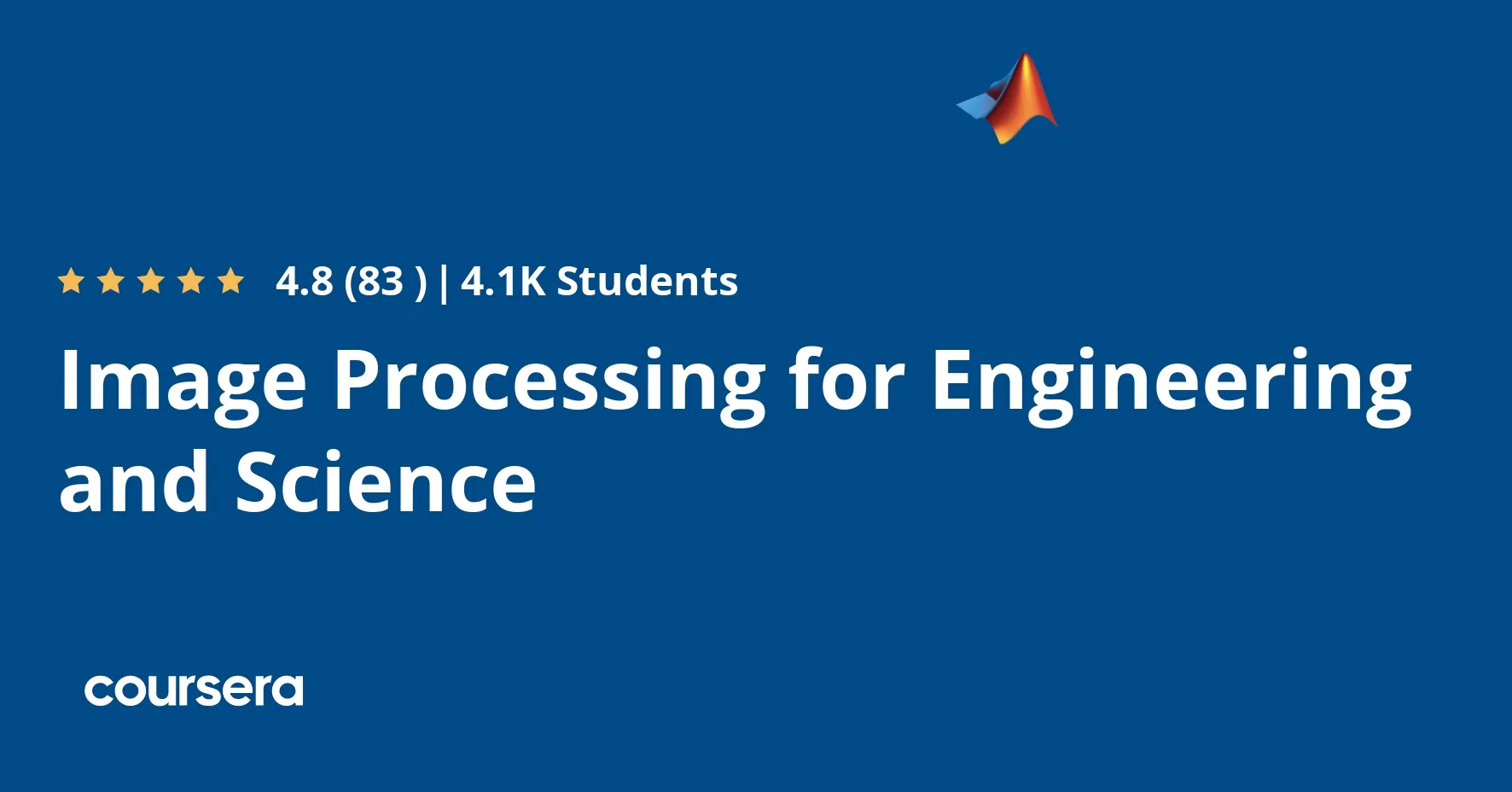
Image Processing for Engineering and Science 
This course provides a comprehensive introduction to image processing techniques, enabling engineers and scientists to quickly acquire the skills necessary to automatically extract information from images. ▼
ADVERTISEMENT
Course Feature
![]() Cost:
Cost:
Free Trial
![]() Provider:
Provider:
Udemy
![]() Certificate:
Certificate:
No Information
![]() Language:
Language:
English
Course Overview
❗The content presented here is sourced directly from Udemy platform. For comprehensive course details, including enrollment information, simply click on the 'Go to class' link on our website.
Updated in [March 06th, 2023]
This course, Image Processing for Engineering and Science, provides an introduction to the fundamentals of image processing. Students will learn how to use image processing techniques to answer questions such as how quickly a glacier melts, whether an MRI image of a healthy brain is visible, if large cracks are present in a foundation, and what the traffic flow is during peak hours. Through lectures, demonstrations, and hands-on activities, students will gain an understanding of the principles of image processing, including image acquisition, image enhancement, image restoration, and image analysis. Additionally, students will learn how to use various software packages to process images. By the end of the course, students will be able to apply image processing techniques to solve real-world problems.
[Applications]
The application of this course, Image Processing for Engineering and Science, can be seen in many areas. It can be used to analyze the melting of glaciers, to detect abnormalities in MRI images, to detect cracks in foundations, and to analyze traffic flow. It can also be used to analyze satellite images, to detect objects in images, and to detect changes in the environment. Additionally, it can be used to detect and classify objects in images, to detect and track moving objects, and to detect and classify objects in videos. With the knowledge gained from this course, engineers and scientists can use image processing to gain insights into their research and projects.
[Career Paths]
1. Image Processing Engineer: Image Processing Engineers are responsible for developing and implementing algorithms to process and analyze images. They use a variety of techniques, such as machine learning, computer vision, and deep learning, to extract meaningful information from images. This field is rapidly growing, as more and more industries are using image processing to gain insights from their data.
2. Computer Vision Scientist: Computer Vision Scientists are responsible for developing algorithms to interpret and analyze images. They use a variety of techniques, such as machine learning, deep learning, and computer vision, to extract meaningful information from images. This field is rapidly growing, as more and more industries are using computer vision to gain insights from their data.
3. Data Scientist: Data Scientists are responsible for analyzing large datasets to uncover patterns and trends. They use a variety of techniques, such as machine learning, deep learning, and statistical analysis, to extract meaningful information from data. This field is rapidly growing, as more and more industries are using data science to gain insights from their data.
4. Artificial Intelligence Engineer: Artificial Intelligence Engineers are responsible for developing algorithms to automate tasks. They use a variety of techniques, such as machine learning, deep learning, and natural language processing, to create intelligent systems that can perform tasks autonomously. This field is rapidly growing, as more and more industries are using AI to automate tasks and gain insights from their data.
[Education Paths]
1. Computer Science: Computer Science is a field of study that focuses on the design, development, and implementation of computer systems and software. It is a rapidly growing field, with new technologies and applications being developed every day. With a degree in Computer Science, you can work in a variety of industries, from software engineering to artificial intelligence.
2. Electrical Engineering: Electrical Engineering is a field of study that focuses on the design, development, and implementation of electrical systems and components. It is a rapidly growing field, with new technologies and applications being developed every day. With a degree in Electrical Engineering, you can work in a variety of industries, from automotive engineering to robotics.
3. Mechanical Engineering: Mechanical Engineering is a field of study that focuses on the design, development, and implementation of mechanical systems and components. It is a rapidly growing field, with new technologies and applications being developed every day. With a degree in Mechanical Engineering, you can work in a variety of industries, from aerospace engineering to medical device manufacturing.
4. Data Science: Data Science is a field of study that focuses on the analysis and interpretation of large datasets. It is a rapidly growing field, with new technologies and applications being developed every day. With a degree in Data Science, you can work in a variety of industries, from finance to healthcare.
Course Syllabus
Introduction to Image Processing
Image Segmentation, Filtering, and Region Analysis
Automating Image Processing
Course Provider

Provider Udemy's Stats at AZClass
Discussion and Reviews
0.0 (Based on 0 reviews)
Explore Similar Online Courses

The People Power and Pride of Public Health

Build a color tool in vanilla JavaScript

Python for Informatics: Exploring Information

Social Network Analysis

Introduction to Systematic Review and Meta-Analysis

The Analytics Edge

DCO042 - Python For Informatics

Causal Diagrams: Draw Your Assumptions Before Your Conclusions

Whole genome sequencing of bacterial genomes - tools and applications

Pressure Force Motion and Humidity Sensors

Appliance Testing Fundamentals

Basic Electrical Engineering
 Related Categories
Related Categories
 Popular Providers
Popular Providers
Quiz
 Submitted Sucessfully
Submitted Sucessfully
1. What is the main purpose of image processing?
2. What is the most common type of image processing?
3. What is the most important step in image processing?
4. What is AIPRM?


Start your review of Image Processing for Engineering and Science